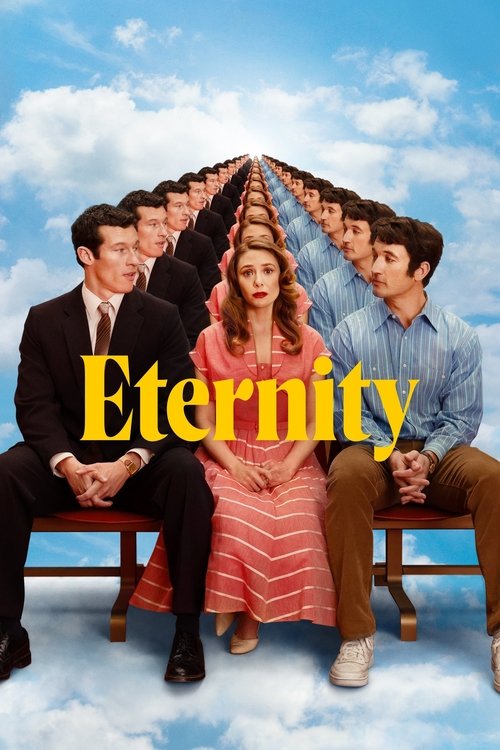
Ask Your Own Question
What is the plot?
Gimme Shelter (2013): Complete Narrative Spoiler
The rain beats down on the cracked pavement outside a rundown apartment in an unnamed city, somewhere in the American Northeast. Inside, sixteen-year-old Agnes "Apple" Bailey (Vanessa Hudgens) sits on the edge of a stained mattress, her body tense, her eyes darting toward the door. Her mother, June Bailey (Rosario Dawson), stumbles in, her breath reeking of alcohol, her voice sharp as broken glass. "You're nothing but a welfare check to me," June sneers, her yellowed teeth bared in a grin that's more threat than smile. Apple's life has been a cycle of foster homes, abuse, and neglect--her mother's love conditional, her father absent since before her birth.
Apple's face is a map of her suffering: piercings that look infected, skin blotched from malnutrition, eyes that have seen too much. She eats when she can, shoveling food into her mouth like a feral animal, never knowing when her next meal will come. The system has failed her, sending her back to June time and again, despite the bruises and the nights she's spent locked out in the cold.
Tonight is different. Apple's belly is swollen with pregnancy, a secret she's kept from June as long as she could. When June reaches for her, Apple flinches, then bolts--out the door, into the rain, her sneakers splashing through puddles as she runs from the only home she's ever known, if you can call it that.
The Search for a Father
Apple's destination is clear in her mind: New Jersey, where her biological father, Tom Fitzpatrick (Brendan Fraser), lives. She's never met him, but she's seen his name on old papers, heard whispers from June about the man who left before she was born. The bus ride is long, the seats hard, but Apple clutches her backpack like a lifeline, her hood pulled low over her face.
When she finally arrives at Tom's mansion--a sprawling estate with manicured lawns and a fountain out front--Apple feels like an alien. She rings the bell, her heart pounding. The door opens, and Tom stares at her, confusion flickering across his face. "I'm your daughter," Apple says, her voice barely above a whisper. Tom's wife, Sheila (Stephanie Szostak), appears behind him, her eyes narrowing as she takes in Apple's tattoos, her piercings, her obvious poverty.
For a brief moment, there's a flicker of hope. Tom lets her inside, offers her a meal. But the tension is palpable. At dinner, Apple's table manners are rough, her hunger obvious. Sheila watches her with barely concealed disdain. "Where did you come from?" Sheila asks, her voice tight. Apple doesn't answer, but her presence is a disruption in their perfect world.
The revelation comes when Sheila notices Apple's pregnancy. "You're pregnant?" Sheila's voice is sharp, her eyes darting to Tom. The next morning, Sheila takes Apple to a clinic. The waiting room is sterile, the air thick with judgment. "You don't have to keep it," Sheila says, handing her a pamphlet. Apple stares at the ultrasound images, the tiny heartbeat flickering on the screen. "I'm keeping my baby," Apple says, her voice firm for the first time in her life.
Back at the house, the confrontation is inevitable. "You can't stay here if you're going to have that baby," Sheila says, her voice cold. Tom is silent, his face a mask of discomfort. Apple packs her few belongings and walks out the door, back into the rain, alone once more.
Survival on the Streets
The streets are unforgiving. Apple sleeps in bus stations, eats from trash cans, shivers in the cold. One night, a man approaches her--a pimp, his smile slick, his intentions clear. "Let's talk business," he says, pulling her toward his car. Apple's heart races. She's been here before, knows what "business" means. But this time, she fights back. As the pimp leans in, Apple shoves him away, jumps into the driver's seat, and slams her foot on the gas. The car lurches forward, tires screeching, then crashes into a barrier. The world goes black.
Apple wakes in a hospital bed, her body aching, her mind foggy. A priest, Father Frank McCarthy (James Earl Jones), sits beside her, his presence calm, his voice gentle. "You're safe now," he says. Apple doesn't trust him--doesn't trust anyone--but there's something in his eyes that makes her pause. "Why do you care?" she asks, her voice hoarse. "Because everyone deserves a chance," he replies.
June arrives at the hospital, a social worker in tow. For a moment, June's face softens, and she reaches for Apple's hand. "Come home, baby," June says, her voice trembling. But Apple knows the truth--June wants her back for the welfare money, not out of love. The moment passes, and June's mask slips. "You're nothing without me," she hisses. Apple turns away, her heart breaking all over again.
A Shelter from the Storm
Father McCarthy doesn't give up. He tells Apple about a place--a shelter for pregnant teens, run by a woman named Kathy DiFiore (Ann Dowd). "It's a safe place," he says. "You don't have to go back to the streets." Apple is skeptical, but she has nowhere else to go.
The Several Sources Shelter is a modest house, warm and lived-in. Kathy greets Apple with a smile, no judgment in her eyes. "You're welcome here," Kathy says. Apple is given a bed, clean clothes, a hot meal. She meets the other girls--Cassandra, Maria, and others--each with her own story of pain and hope. At first, Apple keeps to herself, her walls high, her trust nonexistent. But slowly, she begins to open up. She shares meals, laughs at bad TV shows, lets herself be vulnerable for the first time in her life.
June isn't done. She shows up at the shelter, demanding Apple come home. "She's my daughter!" June shouts, her voice raw with desperation--not for Apple, but for the benefits she represents. When Kathy refuses, June becomes violent, lashing out, screaming obscenities. The police are called, and June is forced to leave, her threats echoing in the air. Apple watches from the window, her heart heavy but resolute. She's not going back.
Bonds and Betrayals
Life at the shelter isn't perfect. Apple struggles with trust, with the idea that anyone could care for her without an ulterior motive. She argues with the other girls, pushes Kathy away. But Kathy doesn't give up. "You're not alone anymore," Kathy says, her voice steady. Apple begins to believe her.
One night, Cassandra (another resident) proposes they leave the shelter, get an apartment together. "We don't need anyone telling us what to do," Cassandra says. Apple is tempted--the idea of independence is seductive. But she looks at her growing belly, thinks of her baby, and realizes that pride isn't worth risking her child's safety. She chooses to stay, to accept the help she's been given.
As her due date approaches, Apple's bond with the other girls deepens. They share their fears, their hopes, their dreams. Apple begins to heal, to believe that she might deserve something better. She starts to think about the future--about being a mother, about breaking the cycle that has defined her life.
Birth and Revelation
The labor is long and painful, but Apple is surrounded by support. Kathy holds her hand, the other girls cheer her on. When her daughter is born, Apple names her Hope--a name that speaks to the future she wants to build. Holding Hope in her arms, Apple feels a love she's never known, a determination to do better than her own mother did.
News of the birth reaches Tom. He arrives at the shelter, his face a mix of guilt and hope. "I'm sorry," he says, his voice cracking. "I want to make things right." He offers to take Apple and Hope home, to give them a life of comfort and security. For a moment, Apple is tempted. She packs her things, says goodbye to the girls, prepares to leave.
But as she stands at the door, baby Hope in her arms, Apple hesitates. She looks around the shelter--at Kathy, at the other girls, at the place that has become her home. She realizes that family isn't just about blood. It's about love, support, and the choice to stay.
"I can't go," Apple says, her voice steady. "This is my home now." Tom nods, his eyes wet with tears. He leaves, but the door between them isn't closed forever. Apple has found her place, her people, her hope.
The Final Scene
The film ends with Apple sitting on the porch of the shelter, Hope asleep in her arms, the sun breaking through the clouds. The other girls laugh inside, the sound of life and possibility filling the air. Apple smiles--a real, genuine smile--for the first time in the movie. She's not just surviving anymore. She's living. She's a mother. She's home.
Key Revelations and Twists
- Apple's father is wealthy but emotionally distant, unable or unwilling to fully accept her, especially when she's pregnant. His offer to take her in at the end is genuine, but comes too late to undo the damage of his initial rejection.
- June's "love" is conditional, tied to the welfare benefits Apple represents. Her final attempt to reclaim Apple is driven by self-interest, not maternal instinct.
- The shelter is a transformative space, where Apple learns to trust, to love, and to hope. The bonds she forms there are stronger than those of blood.
- Apple's decision to keep her baby and stay at the shelter is the culmination of her growth. She chooses responsibility and community over the fleeting promise of material comfort.
- No one dies in the film. The tension comes from emotional survival, not physical danger. The closest brush with death is Apple's car crash, but she survives without lasting injury.
- The shelter's founder, Kathy DiFiore, is based on a real person, a former Wall Street worker who left her career to help pregnant teens in crisis. Her story underscores the film's message of redemption and second chances.
Character Secrets
- Apple's resilience is her secret strength. Despite a lifetime of abuse, she never gives up on herself or her child.
- Tom's secret is his guilt. He knows he failed Apple, and his late attempt to make amends is sincere, if imperfect.
- June's secret is her own trauma. She's a product of the streets, unable to break free from her own cycle of addiction and neglect.
- Kathy's secret is her past. She was once homeless herself, and her work is a form of redemption.
Confrontations and Outcomes
- Apple vs. June: Multiple confrontations, culminating in June's violent outburst at the shelter. Apple stands her ground, refusing to return to abuse.
- Apple vs. Tom and Sheila: A clash of worlds and values. Apple is rejected for her pregnancy, but ultimately finds the strength to reject their conditional offer of help.
- Apple vs. the pimp: A moment of physical danger, resolved when Apple seizes control and crashes the car to escape.
- Apple vs. herself: The central conflict. Apple must learn to trust, to accept help, and to believe she's worthy of love. Her victory is emotional, not physical.
Resolution
The film closes with Apple embracing her new life at the shelter, surrounded by a chosen family. She has broken the cycle of abuse and neglect, and is determined to give Hope a better future. The shelter is not just a refuge--it's a beginning. Apple's story is one of survival, redemption, and the transformative power of compassion.
This is the complete, unflinching story of Gimme Shelter (2013)--every twist, every confrontation, every emotional beat laid bare. Apple's journey from abuse and abandonment to hope and belonging is the heart of the film, a testament to the resilience of the human spirit and the possibility of change, even in the darkest of circumstances.
🔥 Trending Movies Now
Browse All Movies →What is the ending?
In the ending of "Gimme Shelter," Apple, after a tumultuous journey of self-discovery and survival, finds a sense of belonging and hope at a shelter for homeless pregnant teens. She reconciles with her mother, who has been a source of pain and conflict throughout her life. The film concludes with Apple preparing for the birth of her child, symbolizing a new beginning and the possibility of a brighter future.
As the film approaches its conclusion, we see Apple, played by Vanessa Hudgens, in a state of emotional turmoil but also determination. After escaping her abusive home life with her mother, June, Apple has faced numerous challenges, including homelessness and the struggle to find a safe place to stay.
Scene by scene, the ending unfolds as follows:
Apple arrives at the shelter, a place that offers her not just a roof over her head but also a community of support. The shelter is filled with other young women who share similar struggles, and Apple begins to feel a sense of camaraderie with them. The atmosphere is warm and nurturing, contrasting sharply with the harsh realities she has faced.
In a pivotal moment, Apple is visited by her mother, June, played by Rosario Dawson. June's arrival is fraught with tension; she represents both the pain of Apple's past and the possibility of reconciliation. The two women engage in a heated conversation, where Apple confronts her mother about the abuse and neglect she suffered. June, in a moment of vulnerability, expresses her own struggles and regrets, revealing the cycle of pain that has affected both of their lives.
Despite the tumultuous history, there is a glimmer of hope as Apple begins to understand her mother's perspective. The scene is charged with emotion, showcasing Apple's internal conflict as she grapples with her feelings of anger and the desire for connection.
As the shelter staff and other residents rally around Apple, she starts to embrace her role as a soon-to-be mother. The shelter provides her with prenatal care and emotional support, allowing her to prepare for the birth of her child. The environment is filled with encouragement, and Apple begins to envision a future for herself and her baby, one that is different from the life she has known.
In the final scenes, Apple is shown in labor, surrounded by the supportive women from the shelter. The atmosphere is filled with anticipation and hope. As she gives birth, the camera captures her expressions of pain, strength, and ultimately, joy. The birth of her child symbolizes a new beginning, a chance to break the cycle of hardship and create a loving environment.
The film concludes with Apple holding her newborn, a moment of pure emotion that encapsulates her journey. She has transformed from a girl lost in a world of chaos to a young woman ready to embrace motherhood and the responsibilities that come with it.
In terms of character fates, Apple finds a sense of belonging and purpose at the shelter, while her mother, June, is left to confront her own demons, suggesting a long road ahead for both women. The ending leaves viewers with a sense of hope for Apple's future, as she steps into her new role with determination and resilience.
Is there a post-credit scene?
The movie "Gimme Shelter," produced in 2013, does not have a post-credit scene. The film concludes with a powerful resolution to the story of the main character, Apple, as she finds a sense of hope and belonging after overcoming significant challenges. The narrative wraps up without any additional scenes or content after the credits roll, focusing instead on the emotional journey and growth of Apple throughout the film.
What challenges does Apple face when she first arrives at the shelter?
When Apple first arrives at the shelter, she faces numerous challenges, including her deep-seated mistrust of adults and authority figures, stemming from her traumatic past. She struggles with feelings of abandonment and isolation, having been rejected by her mother and having no stable home. The shelter staff, particularly the kind-hearted staff member, tries to help her, but Apple is initially resistant to their support, feeling unworthy of care and love.
How does Apple's relationship with her mother evolve throughout the film?
Apple's relationship with her mother, June, is tumultuous and fraught with emotional pain. Initially, June is abusive and neglectful, which drives Apple away. As the story progresses, there are moments of confrontation where Apple expresses her anger and hurt towards her mother. However, there are also glimpses of June's own struggles, revealing a complex dynamic. Ultimately, the film explores themes of forgiveness and the desire for a mother-daughter connection, culminating in a poignant moment where Apple must decide whether to accept her mother's flawed love.
What role does the character of Father Greg play in Apple's journey?
Father Greg serves as a pivotal figure in Apple's journey towards healing and self-acceptance. He provides her with guidance and support, encouraging her to confront her past and embrace her future. His unwavering belief in her potential helps Apple to see herself in a new light, fostering her growth from a troubled teen into a more resilient individual. Father Greg's compassion and understanding create a safe space for Apple, allowing her to gradually open up and trust others.
How does Apple react to the news of her pregnancy, and what impact does it have on her character development?
Upon discovering her pregnancy, Apple experiences a whirlwind of emotions, including fear, confusion, and a sense of responsibility. Initially, she feels overwhelmed and uncertain about her future, reflecting her lack of stability and support. This news acts as a catalyst for her character development, pushing her to confront her past and make choices that will affect not only her life but also the life of her unborn child. As she navigates this new reality, Apple begins to find strength within herself, ultimately leading her to seek a better life for both herself and her baby.
What is the significance of the shelter in Apple's life and how does it change her?
The shelter represents a turning point in Apple's life, serving as a refuge from her chaotic past. It is a place where she begins to feel safe and supported, allowing her to confront her trauma and start healing. The shelter's environment fosters a sense of community and belonging, which Apple has longed for. As she interacts with the staff and other residents, she learns the value of trust and friendship. This transformation is crucial, as it empowers her to take control of her life and make positive choices for her future.
Is this family friendly?
"Gimme Shelter," produced in 2013, is a drama that deals with heavy themes and contains several potentially objectionable or upsetting scenes that may not be suitable for children or sensitive viewers. Here are some aspects to consider:
-
Teen Pregnancy: The film centers around a young girl, Apple, who is pregnant and grappling with the implications of her situation. This theme may be challenging for younger audiences to understand.
-
Abuse: There are scenes depicting emotional and physical abuse, particularly in the relationship between Apple and her mother. These moments can be intense and distressing.
-
Homelessness: The film portrays the struggles of homelessness, including scenes that depict the harsh realities of living on the streets, which may be upsetting for some viewers.
-
Drug Use: There are references to drug use and addiction, which are part of the characters' backstories and present challenges they face.
-
Emotional Turmoil: The film explores deep emotional struggles, including feelings of abandonment, rejection, and despair, which may resonate strongly with sensitive viewers.
-
Confrontational Scenes: There are moments of confrontation and conflict that can be intense, showcasing the characters' struggles and the harsh realities they face.
Overall, while "Gimme Shelter" offers a powerful narrative about resilience and hope, its themes and scenes may be difficult for younger audiences or those sensitive to such topics.


























